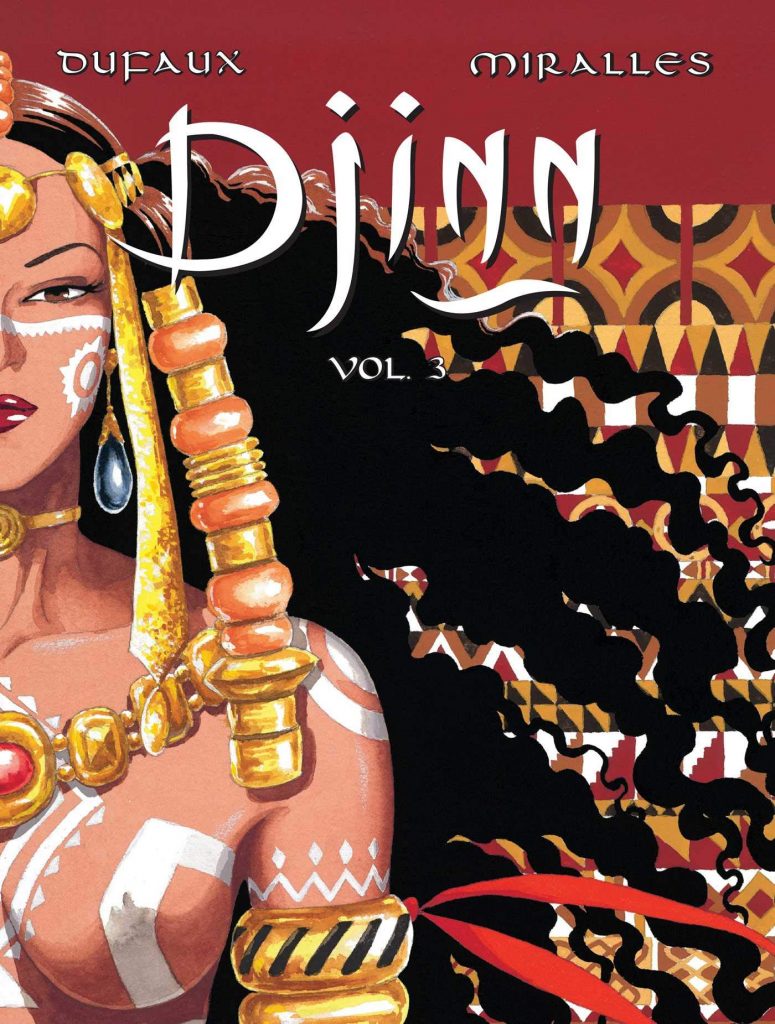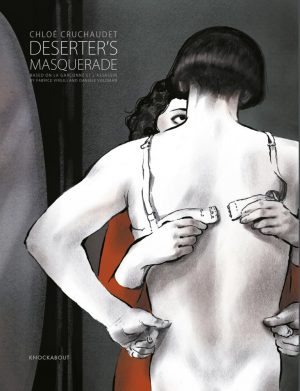Review by Frank Plowright
When last seen in the heady days leading up to World War I, Turkish harem siren Jade and her British thralls Lord and Lady Nelson were leaving Constantinople along with a massive haul of treasure the Sultan had earmarked for delivery to Germany. As seen in Vol. 2 , in the present day Kim Nelson has been searching for information about her grandmother, and along the way has discovered she may be the heir to the missing treasure.
As before, Jean Dufaux mixes adventure in the past and in the present, but for the four chapter African story the first and third chapters are set entirely in the past and the second and fourth entirely in the present. As Insight are packaging two translations of the French volumes per English edition, these presenting what were titled ‘Africa’ and ‘The Black Pearl’ in Europe, it means Vol. 3 presents two cliffhangers to be resolved in Vol. 4, as yet unpublished in English.
The heady erotic content of the previous volumes is dramatically reduced for this package, which concentrates more on the mystery and adventure, and it’s not looking good for Jade and the Nelsons in the past. Lady Nelson is the only survivor of the Orushi tribe’s attack on their boat, but Jade and Lord Nelson are missing. The Orushi believe their goddess Anaktu has returned and ordered white people to leave Africa. The plot is clever, a chance choice of jewellery having immense implications.
As she’s done previously, Ana Miralles makes wonderful use of local clothing, and here body paint, for multiple strikingly composed panels, and provides almost all the art from a middle distance viewpoint, allowing us to revel in the beauty of the people and the surroundings.
Kim Nelson’s quest in the present day has also taken her to Africa, and the opening pages disclose that she’s come to terms with her personality also being that of a Djinn, remaining largely unfulfilled herself. She also notes that since she was last seen in Turkey she’s visited Eschinapur in India, and the revelation of what happened there is a few volumes down the line. Kim is aware of the black pearl so important in the first story, and of something that only Jade in the past knew. As before, Dufaux ensures the experiences of Kim somehow reflect the past as she visits places we recognise from the earlier story, now looking very different. Dufaux treats African legends with a respect rather than undermining them, an abiding spirituality and acceptance strengthening his cast, and it’s the only major character lacking that respect eventually suffers the greatest misfortune.
This is another masterful slab of drama, keeping the intrigue and suspicions as high as the danger anyone named Nelson faces. What Dufaux and the visual characterisation of Miralles convey so well is the inner strength of both Kim and Jade. We know of dangers they’re due to face, yet they journey confidently into the unknown, in Jade’s case imperiously carried, sure their instincts will ensure survival. Despite the book’s ending, Africa still has much to reveal.
One minor quibble is that in what’s a nice production with a combination of matt and raised gloss for the cover, couldn’t a few extra pages have been allocated to include more of the beautiful cover portraits Miralles has produced for assorted European editions? Still, it’s the story that counts, and there should be more than enough to satisfy.





